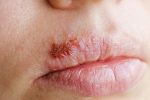Fat. It’s the enemy. Fat cells just sit there, storing your excess calories. Wouldn’t it be great if you could get your fat cells to burn those calories instead? We all know that you can lose weight by getting your muscles to work – yes, that’s exercise – but wouldn’t it be great if you could skip the work and just burn the calories?

For now, it’s just a dream, but it might not be just a dream that much longer. Scientists agree that when you were very young, you could burn calories in just this way, and a growing number are coming around to the idea that at least some of us still can, under particular circumstances. Some scientists are even working on ways to activate the process as a weight loss technique. The key is a type of cell called brown fat, which we have only recently come to realize exists in at least a fair percentage of adults, and whose presence was only detected by accident.
There are two types of fat cells in the human body. The familiar type is called white fat, which is a pretty inert type of cell, consisting mainly of a big droplet of fat with the nucleus shoved over to the side somewhere. It makes up somewhere between 15-25% of most of us by weight, although this varies. Fat people, to take a group at random, seem to have rather a lot of white fat.
Brown fat is different. For one thing, it contains a bunch of little fat droplets instead of one big one. But more importantly, it contains lots and lots of mitochondria. Mitochondria, if you remember your high school biology are the ‘powerhouse of the cell.’ The primary job of mitochondria is to take glucose and oxygen and turn them into carbon dioxide, water, and energy. The process (extra credit if you remember it’s referred to as the Krebs cycle or citric acid cycle) uses that energy to build a molecule called ATP, which is the source of energy for most other cellular processes.
When you exercise, your muscle cells burn glucose to make ATP, and this ATP is then used to contract muscle fibers. In fact, muscle cells consist of little more than mitochondria and the actin and myosin protein chains that do the contracting. Brown fat also contains a lot of mitochondria, but unlike muscle cells, it doesn’t have anything which makes use of all of the ATP the mitochondria can generate. So where does the ATP go? Turns out, brown fat doesn’t produce the ATP in the first place. In the process of burning glucose, mitochondria generate an electrical potential by trapping protons inside their membranes. They use these trapped protons to add another phosphate group to ADP, turning it into ATP. But in the presence of a protein called UCP1, also called thermogenin, the protons are allowed to escape back into the cell, and no ATP is created. So just what is produced? Nothing, really, except a bunch of heat. And heat is what brown fat is all about.
What do you do when you’re cold? If you’re like most of us, you put on more clothing, go somewhere warmer, or failing that, shiver. But this is not an option for everyone. Infants can’t move much and don’t have the muscle control necessary to shiver. Hypothermia is consequently a real potential problem for newborns, and their solution is brown fat. They have a lot of brown fat, primarily along their back and shoulders, and its job is simply to keep the little guys warm. While some other mammals, particularly hibernating rodents, maintain this brown fat throughout their lives, it was long assumed that it disappeared as humans aged.
In recent years, however, scientists have discovered that brown fat is still there. This actually proved a real annoyance to them. Under most circumstances, brown fat is difficult to distinguish from white fat. But, if you happen to be doing fluorodeoxyglucose positron emission tomography (FDG PET) when the brown fat is doing its thing, it will show up clearly, as in the picture below.
A few structures show up dark on this scan-the brain, the heart, the kidneys and bladder, and several spots just above the shoulder blades. These are all areas where the radioactive glucose is concentrating. In the case of the brain and heart, that’s because they are active, and the kidneys and bladder are flushing the excess glucose out of the system. How about those little dots by the neck? Those are deposits of brown fat. At first, doctors considered the spots just an annoyance. FDG PET is usually used to find tumors since most tumors are characterized by high utilization of glucose. A tumor, in fact, will look an awful lot like one of the fat brown spots, although tumors are almost never quite so symmetrically distributed. For a while, doctors figured that the spots were due to muscle tension created by the anxiety of the test. This hypothesis seemed particularly plausible because the spots did not show up all the time, even on an individual patient, and the use of anti-anxiety drugs made the spots disappear.
But when the doctors combined FDG PET with CAT scans, they realized that the spots weren’t dense enough to be muscle tissue. In fact, they looked exactly like fat tissue, but fat tissue that was burning a heck of a lot more glucose than standard white fat ever did. Further studies showed that the spots were much more likely to show up when the patients were cold, which is exactly what you’d expect for brown fat.
So do we all have brown fat? Doctors aren’t entirely sure yet. Some scientists believe that people with high metabolic rates (you know, those annoying SOBs that seem to be able to eat whatever they want without gaining weight) either have unusually large amounts of brown fat, or the brown fat they have is particularly active. But it’s difficult to tell. The tissue is very hard to distinguish without FDG PET, and you can’t really stick someone in a scanner for a week to see how much glucose their brown fat is burning.
So, if you want to lose some weight, how can you turn your brown fat on? The clear way is to get cold, which isn’t particularly pleasant, and during peak bathing-suit season, it may not be all that practical, either. The glucose-burning mechanism is mediated by norepinephrine released by the nervous system, so you could try to do that more directly, but norepinephrine has a lot of effects in the body, not all of them particularly pleasant, so it would be lovely to come up with a more targeted way to get at the brown fat. So far, scientists haven’t figured out how, but since they didn’t even realize the brown fat existed a few years ago, they haven’t been trying all that long. So who knows? A decade from now, rather than telling you that you need to do all of that tedious dieting and exercise, your doctor may hand you a pill and tell you to tune in, heat up, and slim down. Maybe the stuff will give you groovy hallucinations, too. Hey, it’s my dream. You don’t want the mind-altering part, get your own dream.



